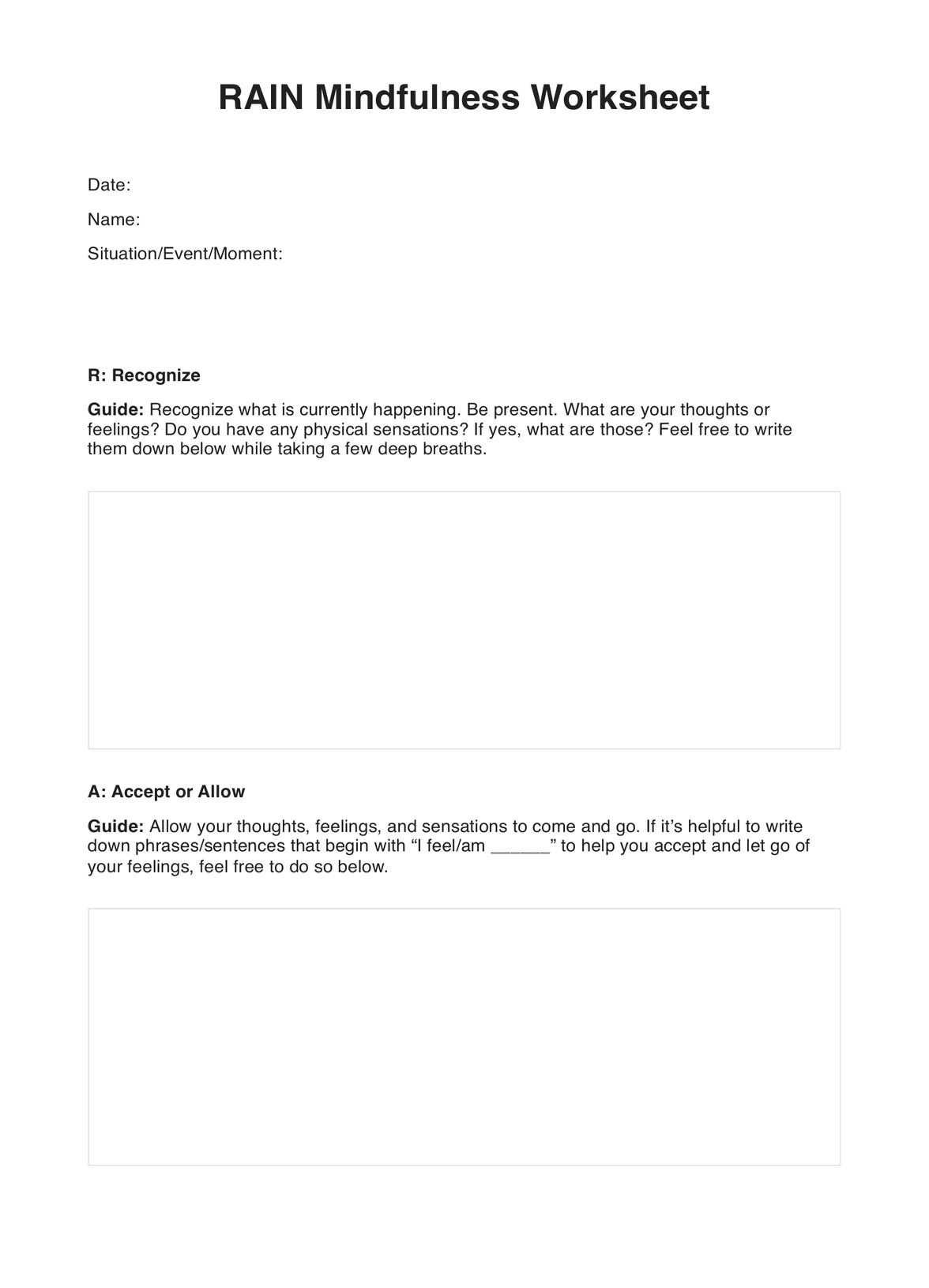Mental health practitioners and their clients experiencing overwhelming emotions are most likely to use and benefit from the rain mindfulness worksheets.

Rain Mindfulness Worksheet
Help your client practice mindfulness and self-compassion with the help of our rain mindfulness worksheets. Click here for a free copy of our template!
Use Template
Rain Mindfulness Worksheet Template
Commonly asked questions
Clients, in particular, use the rain mindfulness worksheets whenever they need a clear structure, guide, or direction to be more present or handle their thoughts, feelings, and physical sensations during troubled times.
It's meant to assist practitioners who will guide their clients through the framework. Alternatively, it can be a document where clients can write down their thoughts or feelings as they experience mindfulness.
EHR and practice management software
Get started for free
*No credit card required
Free
$0/usd
Unlimited clients
Telehealth
1GB of storage
Client portal text
Automated billing and online payments











